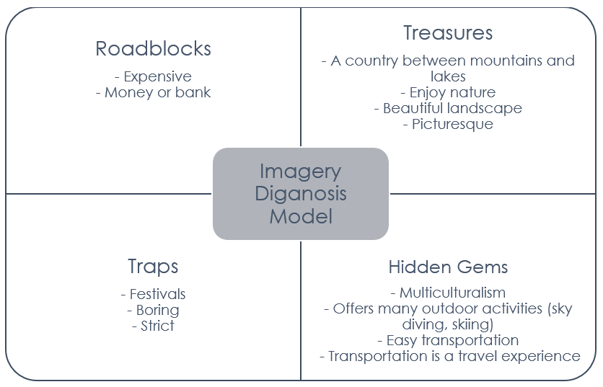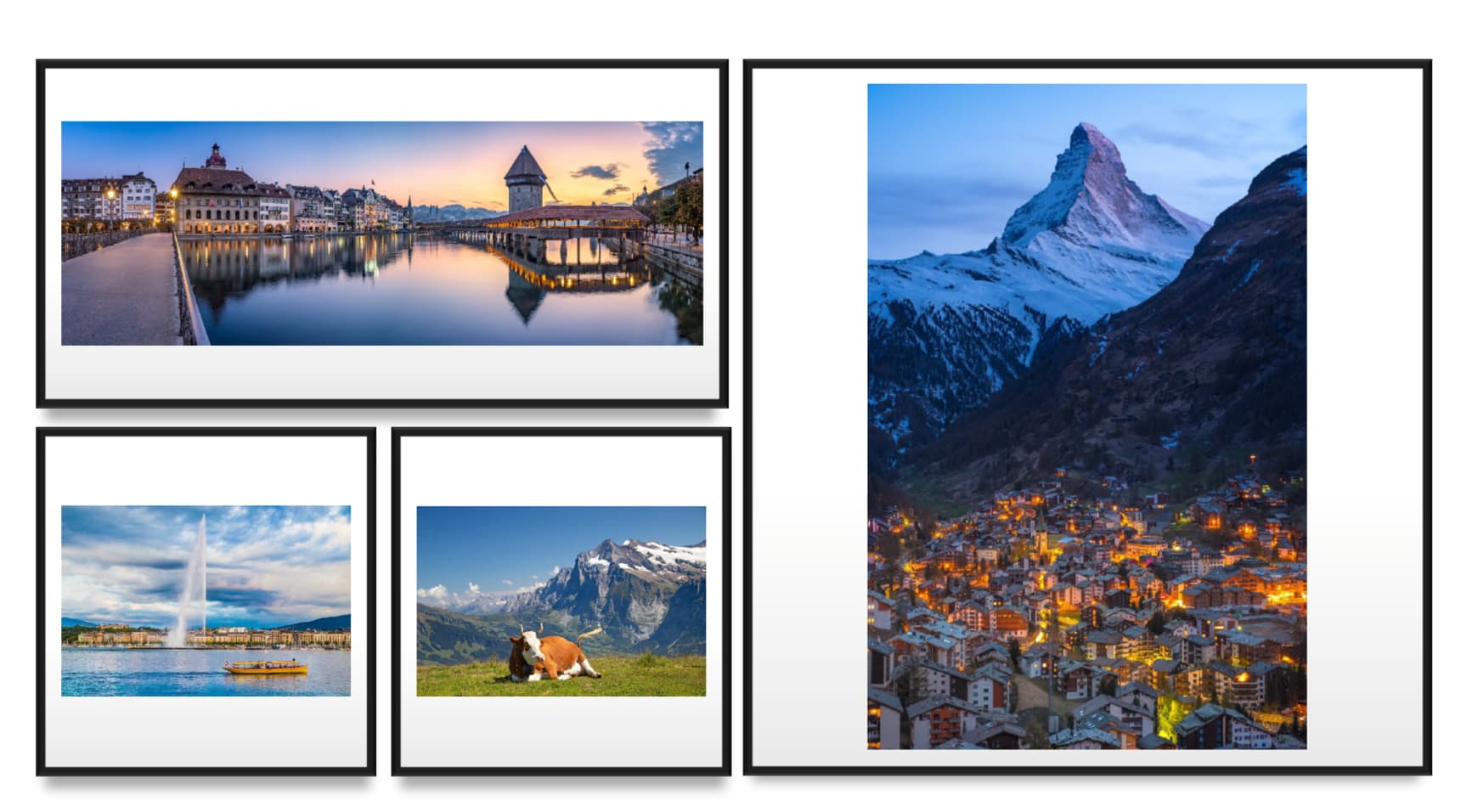A picture is worth a thousand words!
A picture is worth a thousand potential visitors to a destination! Destination marketing organizations have used photos to inform, persuade and remind tourists. The popularity of selfie culture further reinforces the importance of pictures, as millennials always search for that Kodak moment! Yet, is there a method to select the best images to promote a destination? After one and a half years of research, we have developed the "Imagery Diagnosis Model," which is the answer.
The Imagery Diagnosis Model
Our research process has two stages. In the first stage, we conducted qualitative research to identify photos and beliefs associated with Switzerland. We finished with 65 photos and 23 beliefs. In the second stage, we surveyed 796 residents in the UK, France, Germany and Italy to understand (a) if the identified photos or beliefs are associated with Switzerland? and (b) do they have positive or negative attitude toward the photos or beliefs? At the end of the second stage, we had at least 157 responses for every photo and 796 responses for every belief. Based on these responses, we developed the Imagery Diagnosis Model.

Figure 1
As shown in Figure 1, Imagery Diagnosis Model has four quadrants. Quadrant 1, Treasures, are photos or beliefs evaluated as strongly and positively associated with Switzerland. Quadrant 2, Hidden Gems, are photos or beliefs less associated with Switzerland, but respondents have a positive attitude. Quadrant 3, Traps, are photos or beliefs less associated with Switzerland and have been evaluated less positively or negatively. Quadrant 4, Roadblocks, are strongly associated but less positively or negatively.
We recommend leveraging Treasures, developing Hidden Gems, ignoring Traps, and proceeding cautiously with Roadblocks.
Figure 2 illustrates the Imagery Diagnosis Model with beliefs. Respondents acknowledged Switzerland's authentic nature is beautiful. This finding echoes with Switzerland Tourism's slogan before the pandemic: “Nature wants you back". On the other hand, respondents were pleasantly surprised to learn that outdoor activities (hiking, skiing, sky diving), multiculturalism and transportation can be a travel experience. Nevertheless, some respondents rated festivals (e.g., Montreux Jazz & Basel festival) and some iconic tourist spots (e.g., Zermatt & St Moritz) as less associated with Switzerland. Last, Roadblocks reflect stereotypes of Switzerland.
 Figure 2
Figure 2
Figure 3 presents four photos located in Quadrant 1 Treasures (Zermatt Matterhorn, a cow resting in the meadow) and Quadrant 2 Hidden Gems (Lucern and Geneva).

Figure 3
Effective destination marketing
My Switzerland's latest promotion, « No Drama », showcases Switzerland Tourism's new ambassador, Roger Federer. In this video, you will find our four themes. Working with Federer is already an ACE. Federer's achievements in tennis have won him international respect. People associate Federer with Switzerland. Federer is a national treasure when it comes to tennis and tourism!
Our Image Diagnosis Model contributes to destination marketing organizations in several ways.
- Marketers can quantify responses with association strength and association valence. This initiative affords marketers to study a large number of photos or beliefs (in our study, 65 photos and 23 beliefs) and collect responses from a large number of respondents (796 respondents in our study).
- Once marketers assess the association strength and association valence, we propose corresponding marketing actions: leveraging Treasures, developing Hidden Gems, ignoring Traps, and proceeding cautiously with Roadblocks.
- Marketers can compare differences between target markets (we investigated four countries).
- Marketers can and trace changes over time.
All these enable marketers to make informed decisions.
Although we developed the Imagery Diagnosis Model for destination marketing, marketers can apply this model to product marketing or branding. Do you want to learn more about the Imagery Diagnosis Model?





